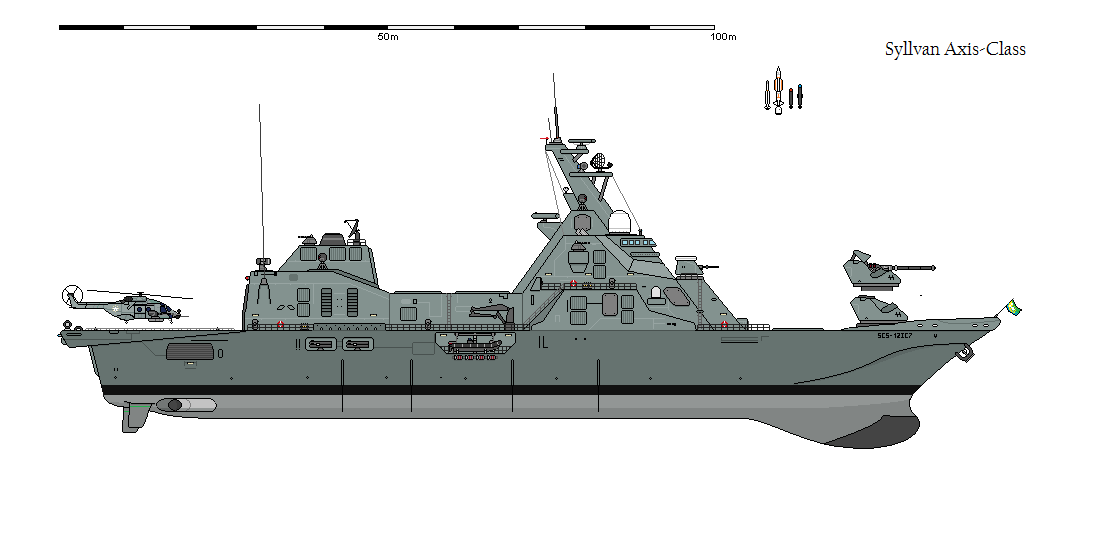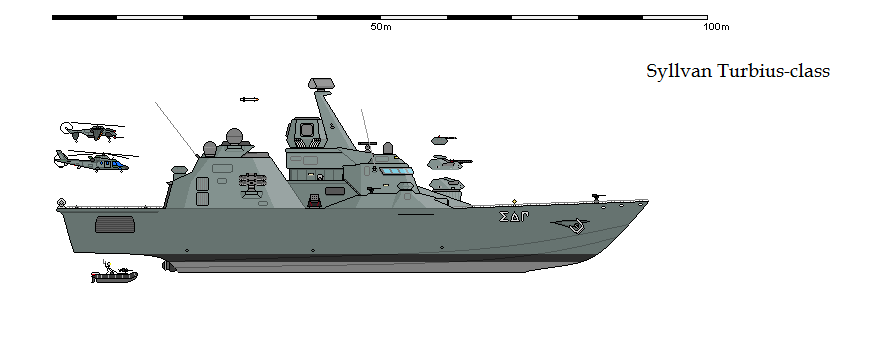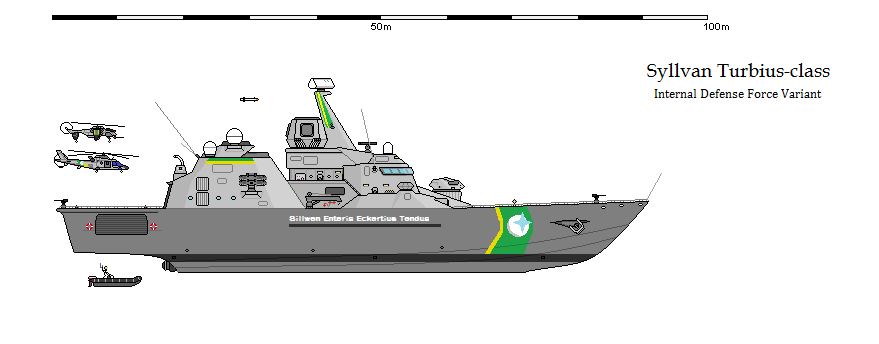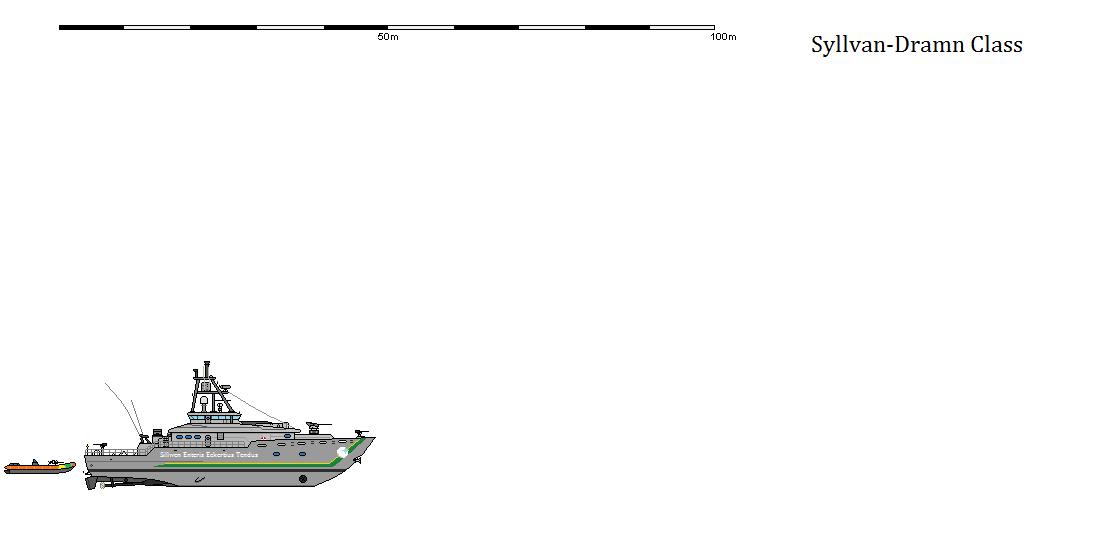Jerikus-class C&C platform
[spoiler]Basic information
[ul]
[li] Type - Militarized semi-submersible platform
[li] Displacement - 125,040 tonnes
[li] Length - 163 meters
[li] Height - 75 meters
[li] Beam - 138 meters
[li] Draft - 15 meters when under way, 35 meters on station
Propulsion
[li] x6 M&SM Diesel-electric 1205-A generators generating 4.2 mW each
[li] x6 SFS electric motors at 6000 hp each powering 4 propellers
[li] x8 SFS Jerikus-type maneuvering thrusters
Performance
[li]Range -
[ul][li]Global, under tow
[li] 1200 km, under way[/li][/ul]
[li] Top Speed - 12 knots
Compliment
[li] 27 officers, 76 enlisted
Sensors
[li] SS8/P surface-search/navigation radar
[li] SS9-L2 multifunction radar
[li] x2 A/SR104 air search radar
[li] x2 SC9-K fire control radar
[li] S4-50G ship defense system
[li] S44-L aircraft guidance array
Electronic Warfare and Decoys
[li] x12 Model 85-W decoy launching array
[li] x2 Model K-44/M torpedo countermeasure system
[li] S60-88/EW electronic warfare system
[li] S90-12/EW electronic warfare suite
Armament
[li] x4 25mm Model 45/D CIWS
[li] x8 15 mm Model 50/N heavy machine gun
[li] x4 Model 99/J-1 RAM guided missile launcher
Sub-vehicles
[li] x4 SDU-99 TUHK/H unmanned combat helicopter
After the proven utility of the Margo-class radar platform, the EDF selected 10 Mega-type construction platforms to convert to military use. Filling the niche of theater command vessel and logistics center usually taken by fleet carriers, the Jerikus-class is the lynchpin of larger EDF operations. With the raw materials storage converted to military cargo space, and all but one crane mounting stripped out and replaced with surface-to-air missile systems, a Jerikus-class platform can perform supply and defense duties better than some purpose-designed vessels.
A shallow hanger deck is located immediately below the helipad on top of the superstructure, and along with the adjoining AIMD shop, stores and services four Hunter/Killer drone helicopters. These unit can be loaded onto a central elevator via a turntable rail system and brought up to the helipad for launch.
In addition to the aircraft storage, smaller vessels such as corvettes and patrol boats can dock in between the platform pylons for resupply.
Much of the additional spaces inside the platform have been occupied by tactical command stations and communications relays. Two CICs allow the platform’s commander to direct the individual operations of the unit, as well as those of a larger battle group or even theater-wide forces when anchored. A standard carrier-level ECM system is supplemented by a E-War suite specially engineered to benefit from the significant array of sensors on the Jerikus-class.
[/li][/ul][/spoiler]







